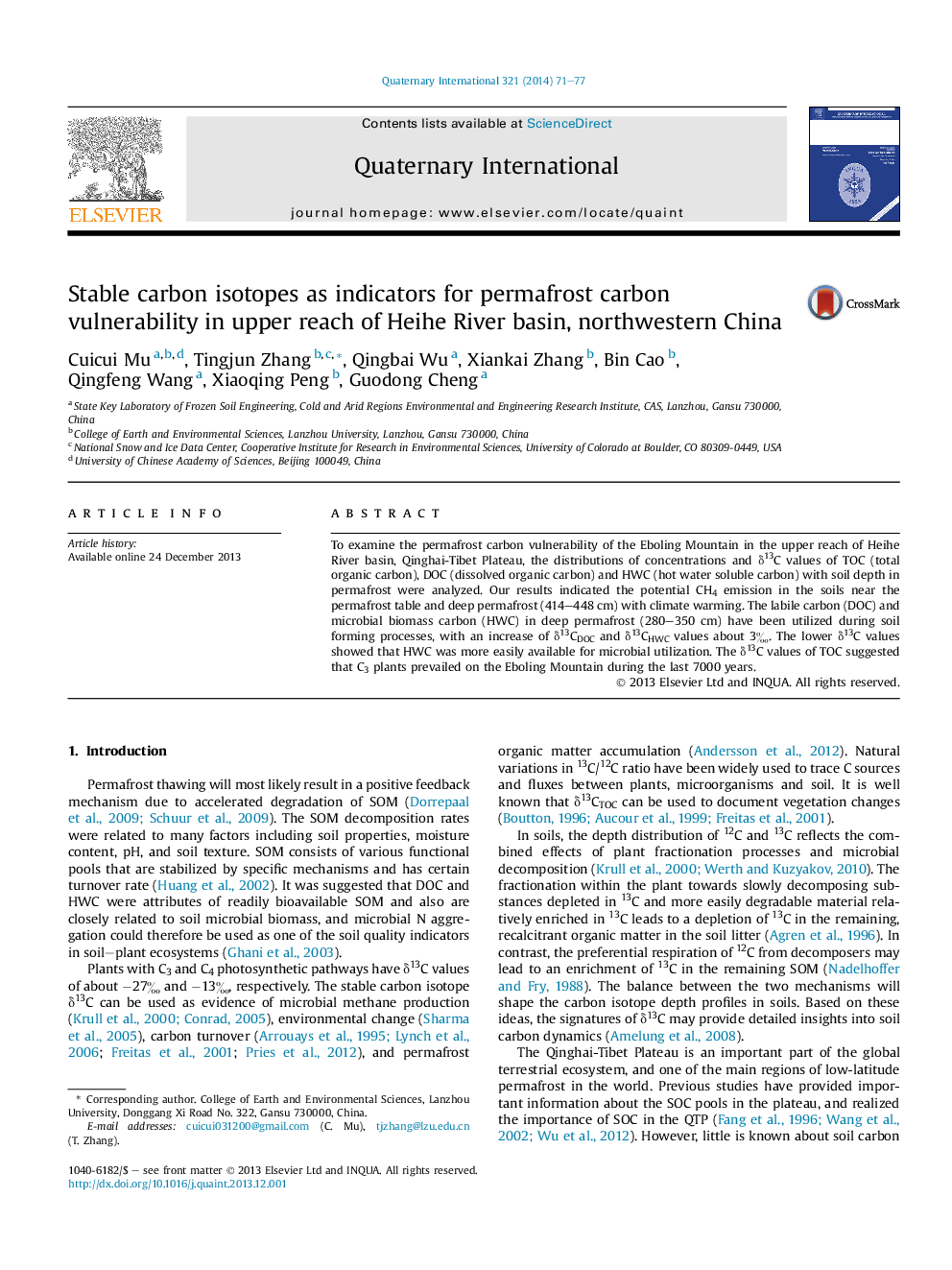| Article ID | Journal | Published Year | Pages | File Type |
|---|---|---|---|---|
| 1041666 | Quaternary International | 2014 | 7 Pages |
To examine the permafrost carbon vulnerability of the Eboling Mountain in the upper reach of Heihe River basin, Qinghai-Tibet Plateau, the distributions of concentrations and δ13C values of TOC (total organic carbon), DOC (dissolved organic carbon) and HWC (hot water soluble carbon) with soil depth in permafrost were analyzed. Our results indicated the potential CH4 emission in the soils near the permafrost table and deep permafrost (414–448 cm) with climate warming. The labile carbon (DOC) and microbial biomass carbon (HWC) in deep permafrost (280–350 cm) have been utilized during soil forming processes, with an increase of δ13CDOC and δ13CHWC values about 3‰. The lower δ13C values showed that HWC was more easily available for microbial utilization. The δ13C values of TOC suggested that C3 plants prevailed on the Eboling Mountain during the last 7000 years.
